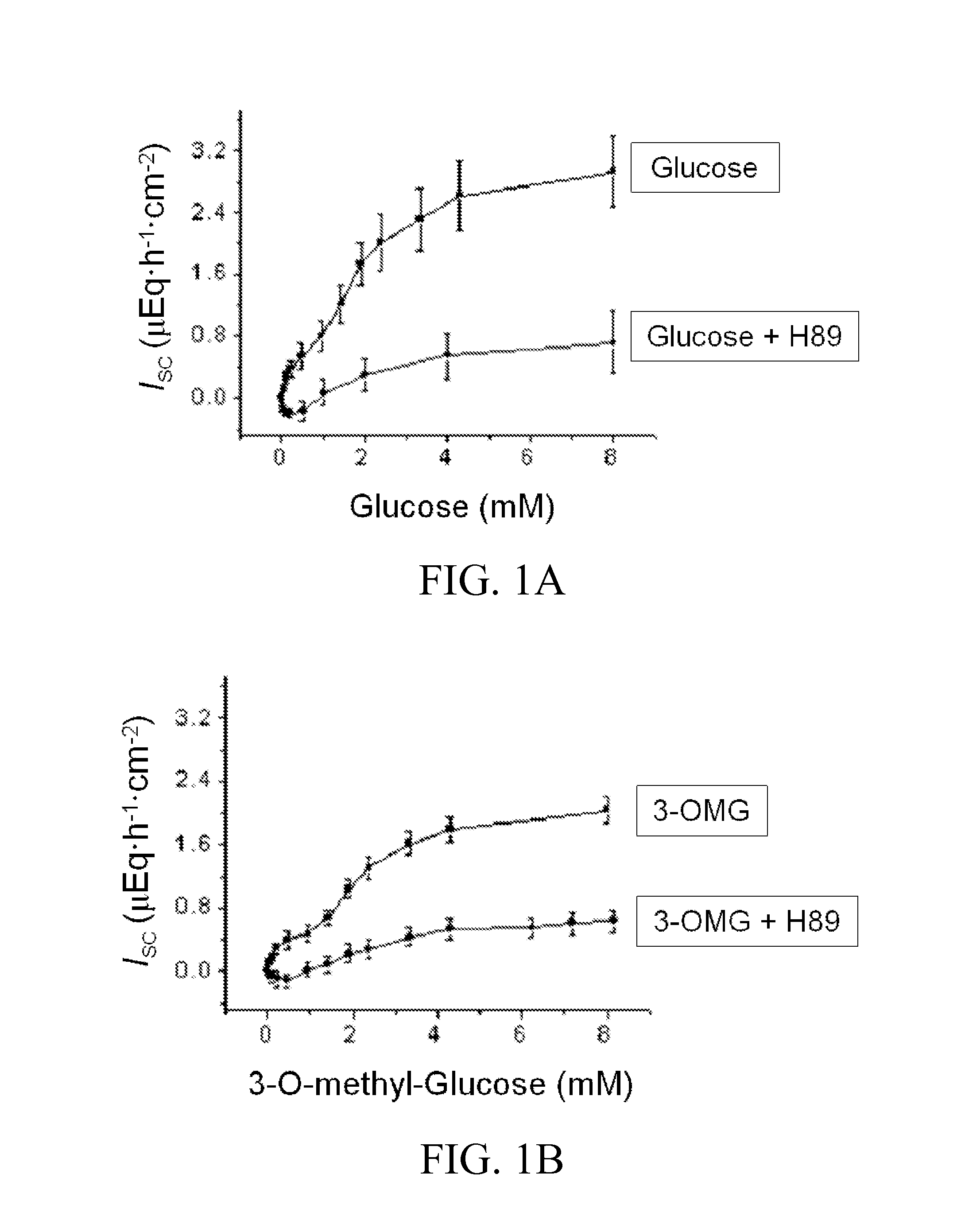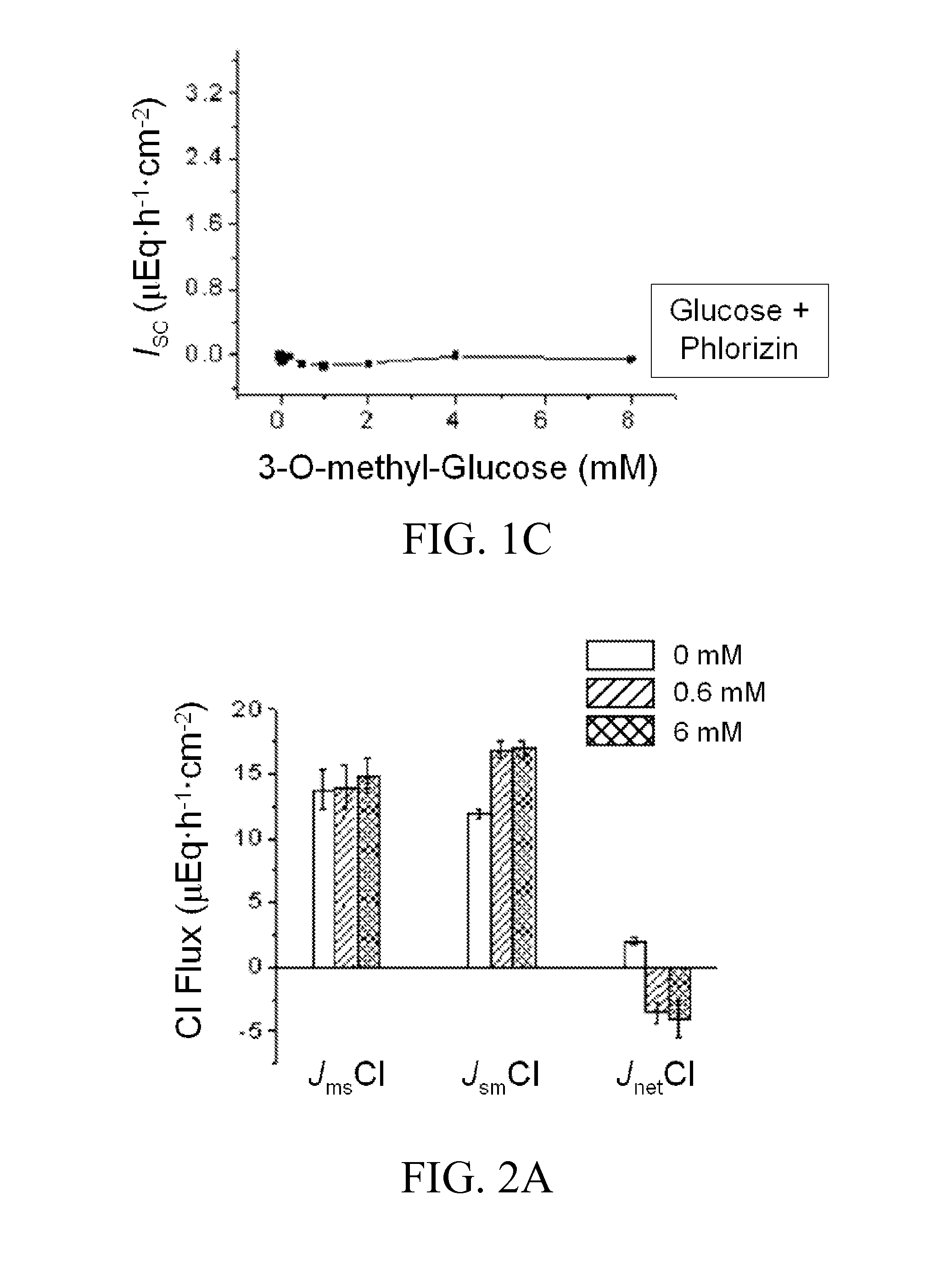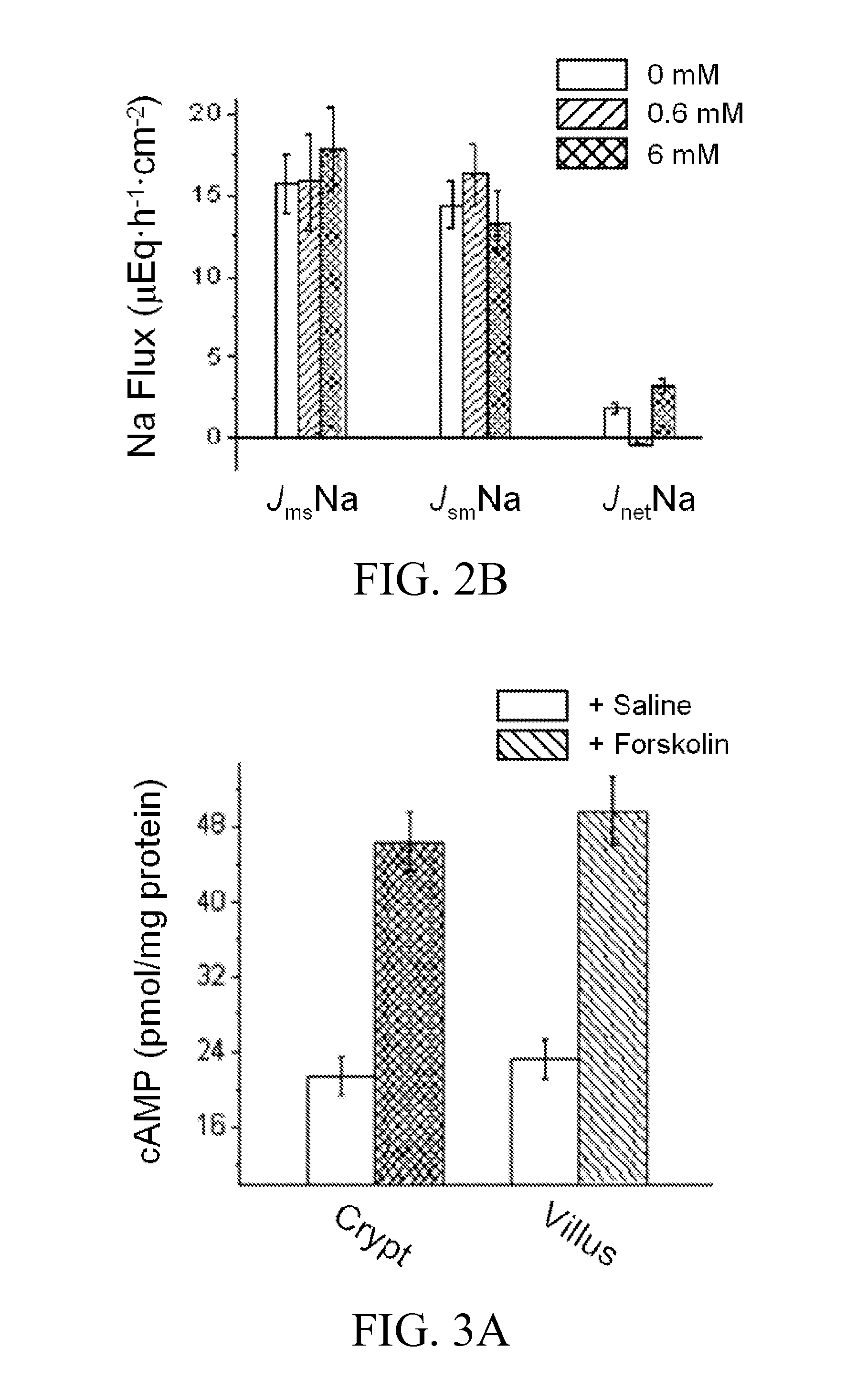Materials and methods for treating diarrhea
- Summary
- Abstract
- Description
- Claims
- Application Information
AI Technical Summary
Benefits of technology
Problems solved by technology
Method used
Image
Examples
example 1
Glucose-Stimulated Increase in ISC in Ileum
[0090]This Example shows that glucose stimulates an increase in Isc in mouse ileum. Specifically, addition of glucose (8 mM) to the lumen side results in a significant increase in Isc when compared to its basal level (3.4±0.2 vs 1.1±0.1 μEq·h−1·cm−2). The Isc obtained using standard Ussing chamber studies is a summation of net ion movement across the epithelium (Isc=JnetNa++JnetCl−+Jnet HCO3−−JnetK+).
[0091]There are no known Na+ absorptive (ENaC-mediated) or Na+ secretory mechanisms in the small intestine. Treatment of the mucosal side of the small intestine with 10 μM amiloride, an epithelial sodium channel inhibitor, produces no effect on J.
[0092]Therefore, the basal Isc of 1.1±0.1 μEq·h−1·cm−2 is primarily due to cystic fibrosis transmembrane conductance regulator (CFTR) activity from the crypt and K+ secretory current.
[0093]To determine the saturation kinetics of Na+-coupled glucose transport, increasing concentrations of glucose up to ...
example 2
3-O-Methyl-Glucose-Stimulated Increase in ISC
[0094]This Example investigates whether the glucose saturation kinetics observed in Example 1 are due to SGLT1-mediated transport but not due to glucose metabolism in the epithelial cells. Specifically, 3-O-methyl-glucose (3-OMG), a poorly metabolized form of glucose, is added to the lumen side to study saturation kinetics of Na+-coupled glucose transport.
[0095]FIG. 1B shows the saturation kinetics of 3-OMG, with a Vmax of 2.3±0.13 μeq·h−1·cm−2 and a Km of 0.22±0.07 mM). Addition of 3-OMG results in a significant decrease in Vmax (2.3±0.13 μeq·h−1·cm−2 vs 3.4±0.2 μeq·h−1·cm−2) with no change in Km in the Na+-coupled glucose transport, when compared to that with glucose. Similar to glucose, a knick is observed with 3-OMG at concentrations 0.5 to 0.7 mM (FIG. 1B).
example 3
Glucose-Stimulated ISC in the Presence of H-89
[0096]Based on the currently-known transport mechanisms, the glucose-stimulated increase in Isc could result from electrogenic anion secretion or electrogenic Na+ absorption.
[0097]Protein Kinase A (PKA), also known as the cAMP-dependent protein kinase, is required in the activation of CFTR channels. To study the role for PKA in glucose-induced increase in Isc, tissues are mounted in Ussing chambers and incubated with H-89, a PKA inhibitor, for 45 minutes. Subsequently, the tissues are used for studying glucose saturation kinetics.
[0098]In the presence of H-89, glucose shows a Vmax of 0.8±0.06 μEq·cm−2·h−1 and a Km of 0.58±0.08 mM. The knick in the glucose saturation curve (observed when ileal tissues are incubated with glucose at concentrations ranging from 0.5 to 0.7 mM) disappears altogether when ileal cells are pre-treated with H-89, with a shift of the saturation curve to the right (FIG. 1C). The results indicate the inhibition of PK...
PUM
 Login to View More
Login to View More Abstract
Description
Claims
Application Information
 Login to View More
Login to View More - R&D
- Intellectual Property
- Life Sciences
- Materials
- Tech Scout
- Unparalleled Data Quality
- Higher Quality Content
- 60% Fewer Hallucinations
Browse by: Latest US Patents, China's latest patents, Technical Efficacy Thesaurus, Application Domain, Technology Topic, Popular Technical Reports.
© 2025 PatSnap. All rights reserved.Legal|Privacy policy|Modern Slavery Act Transparency Statement|Sitemap|About US| Contact US: help@patsnap.com



